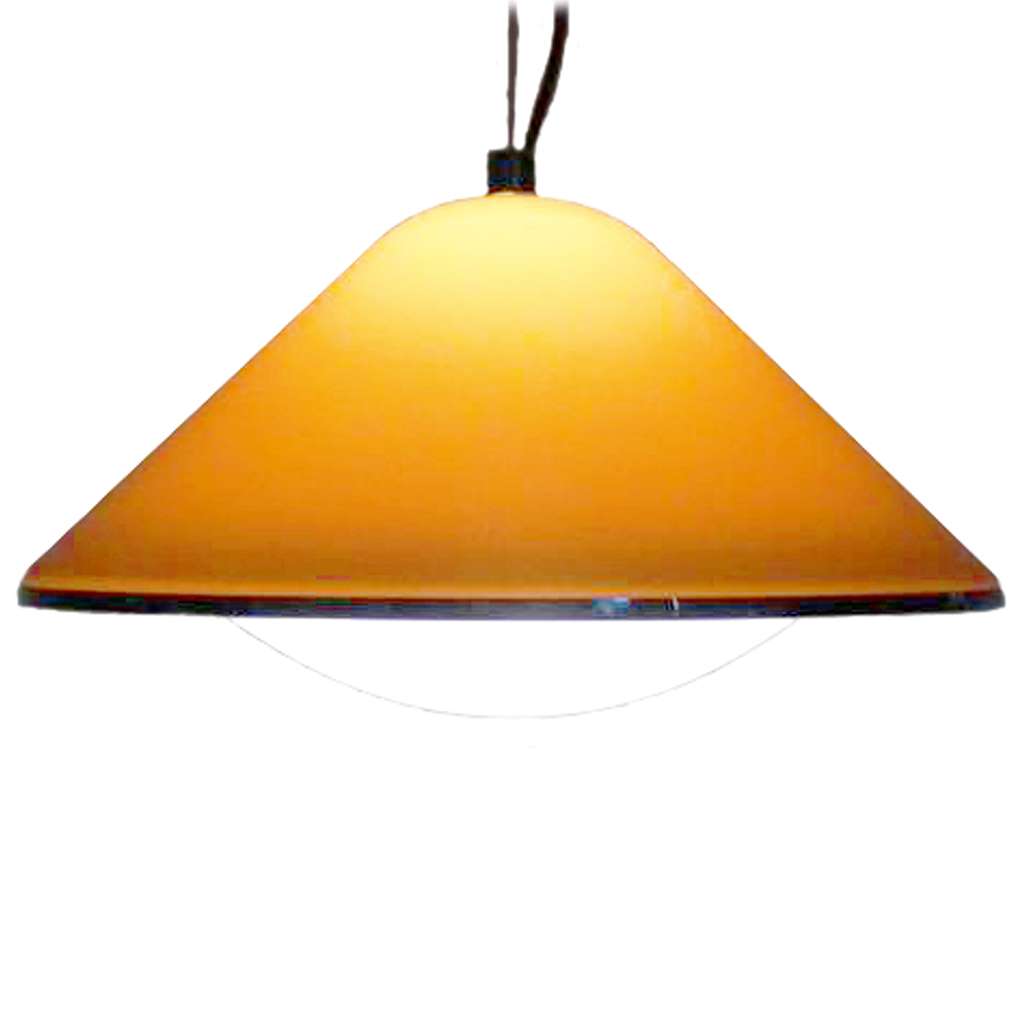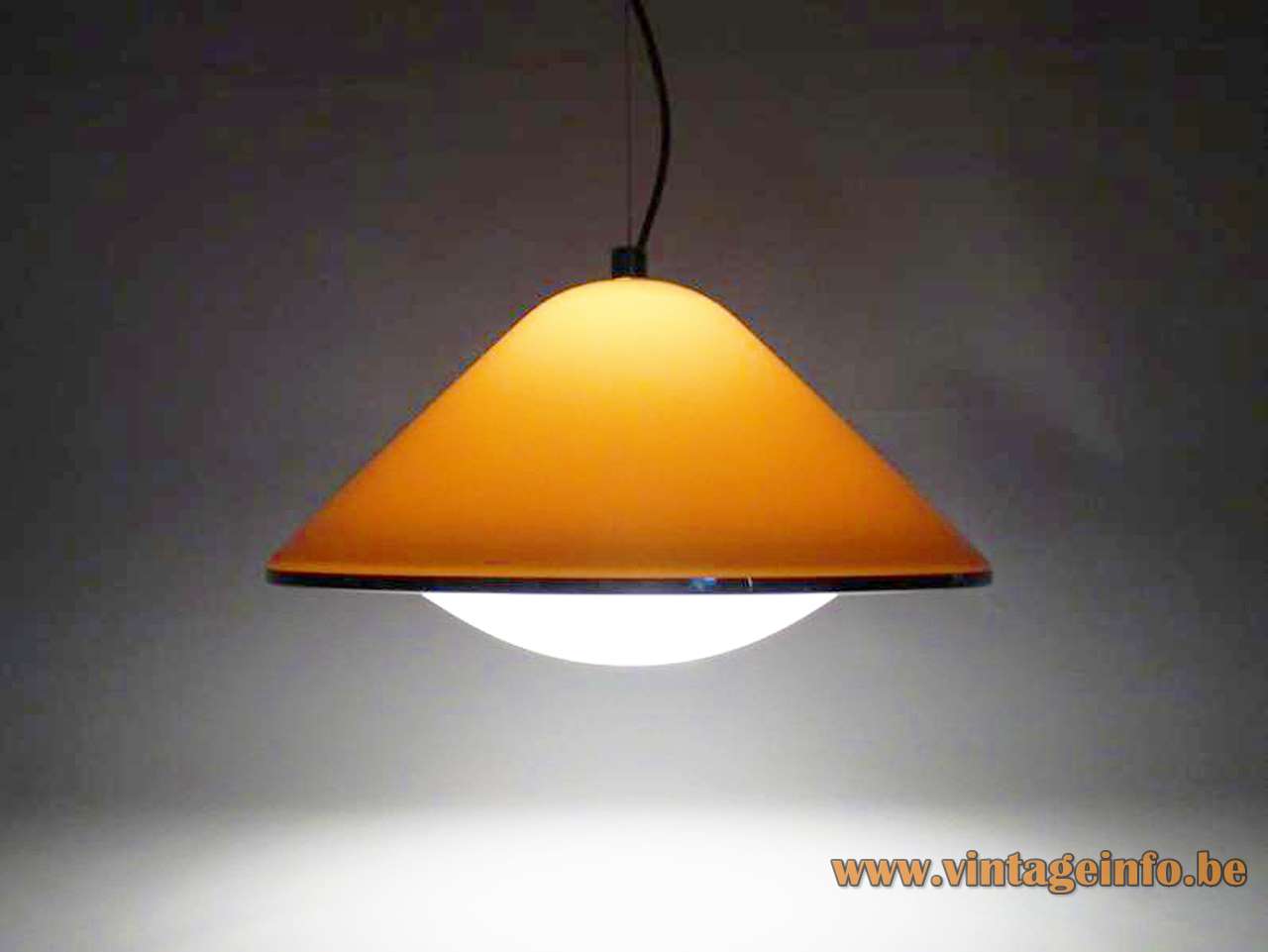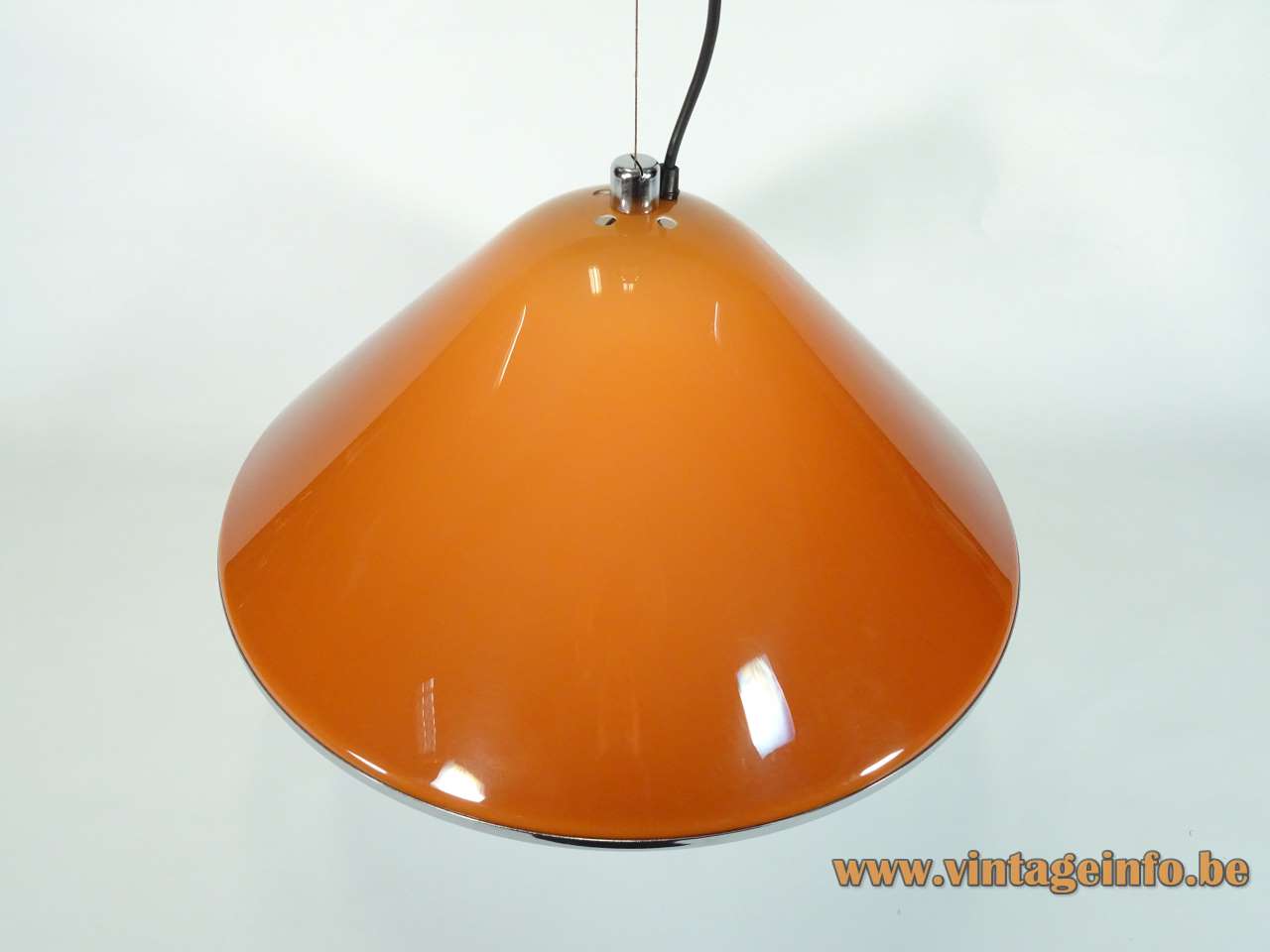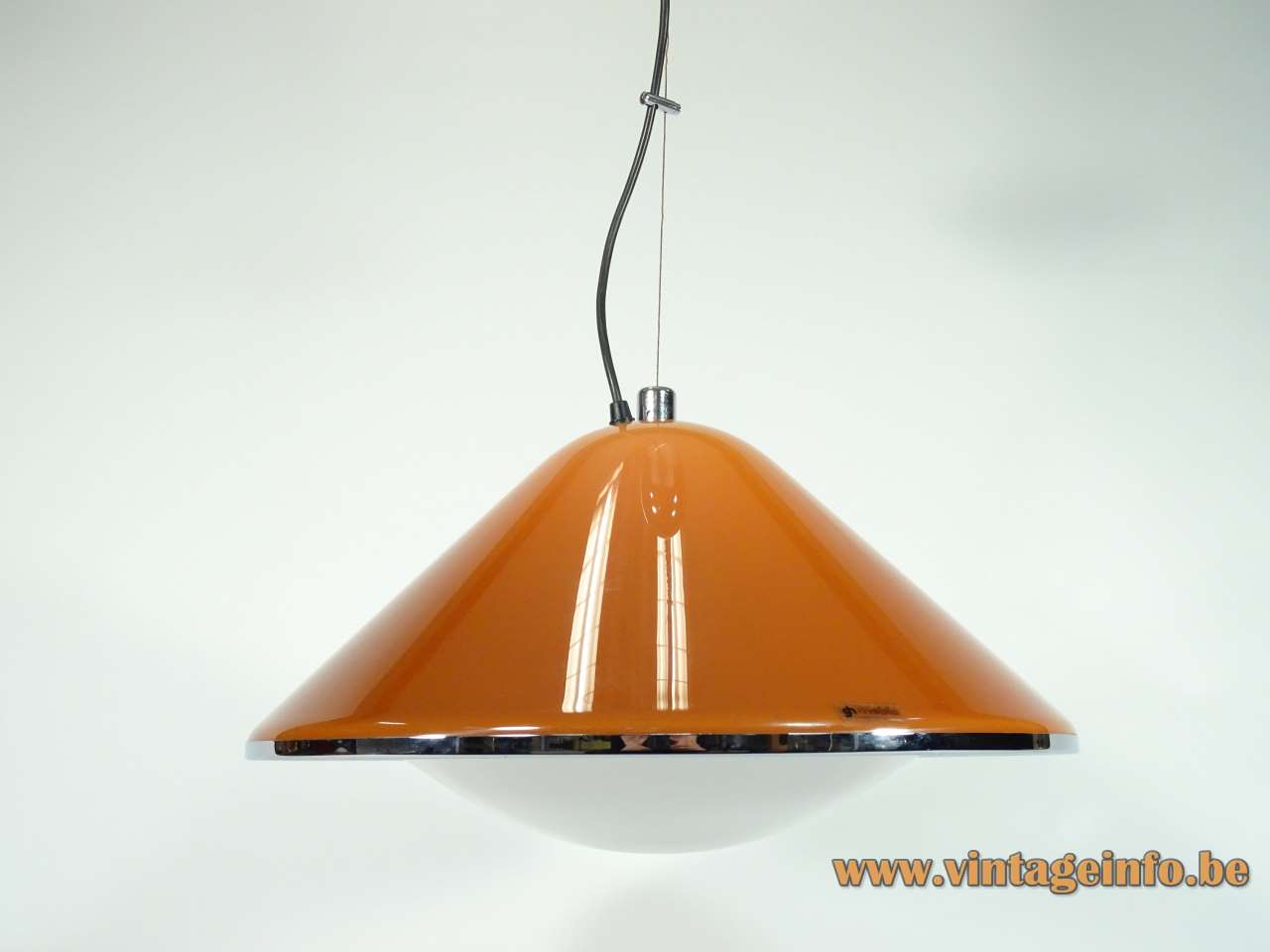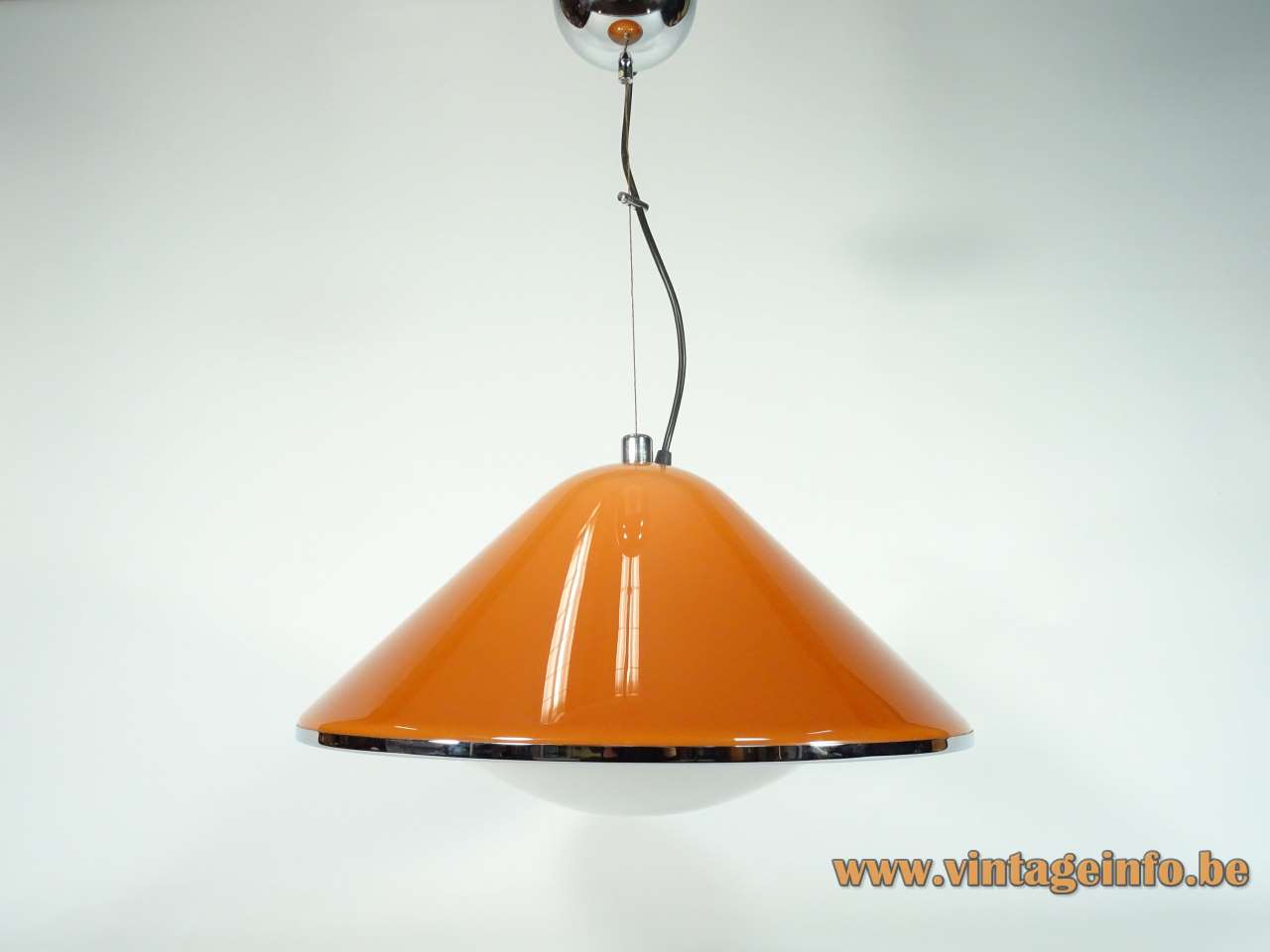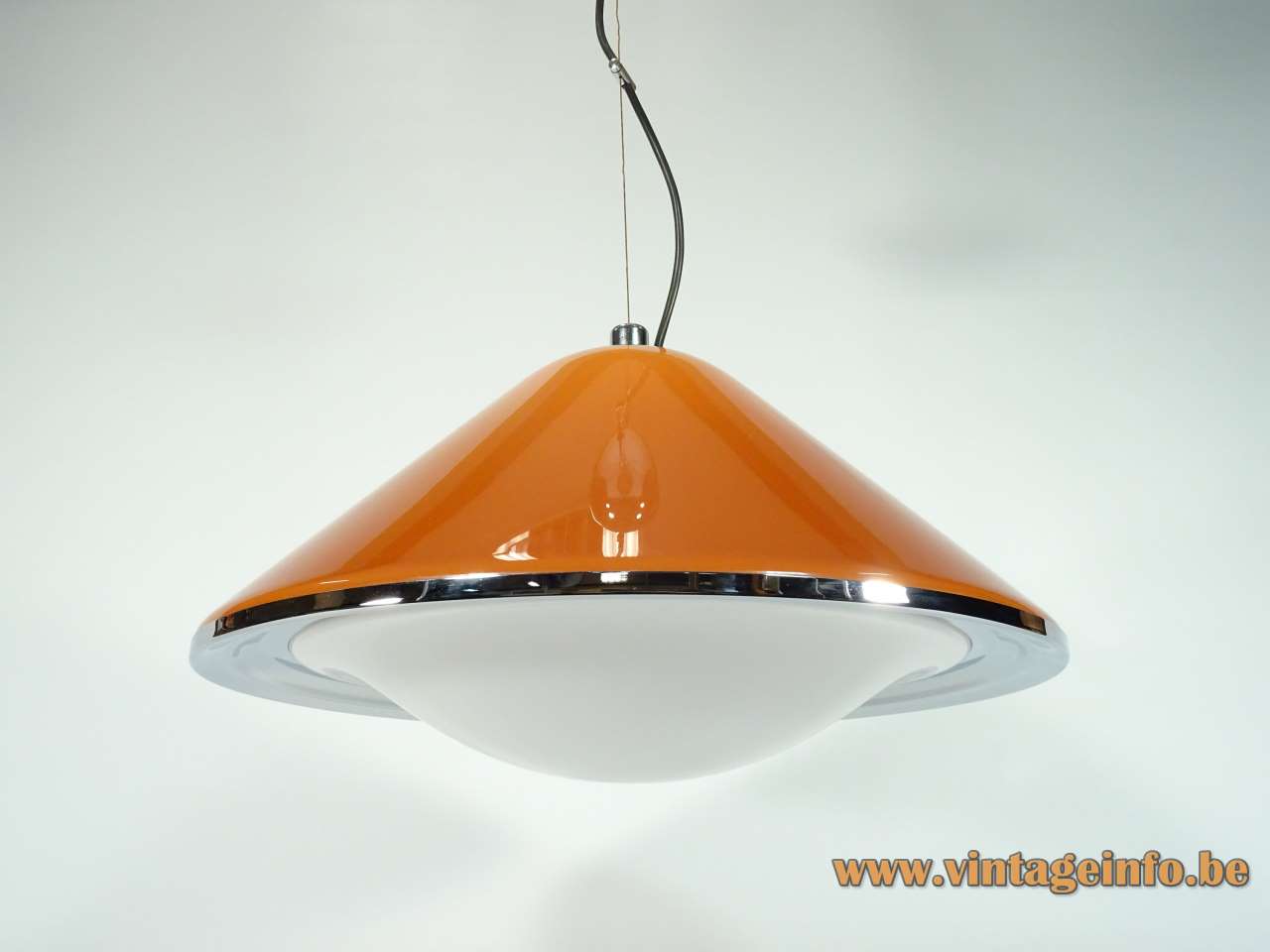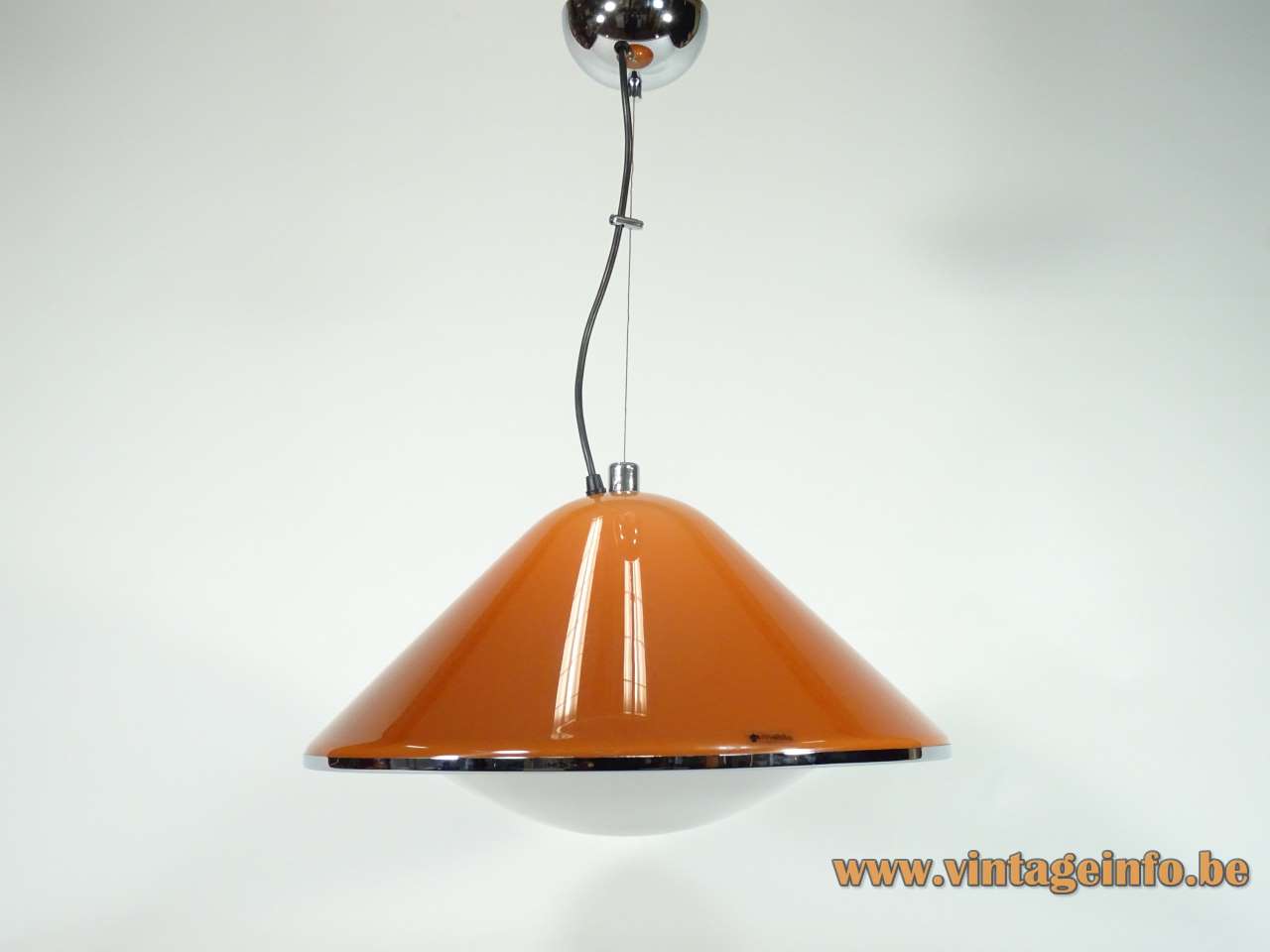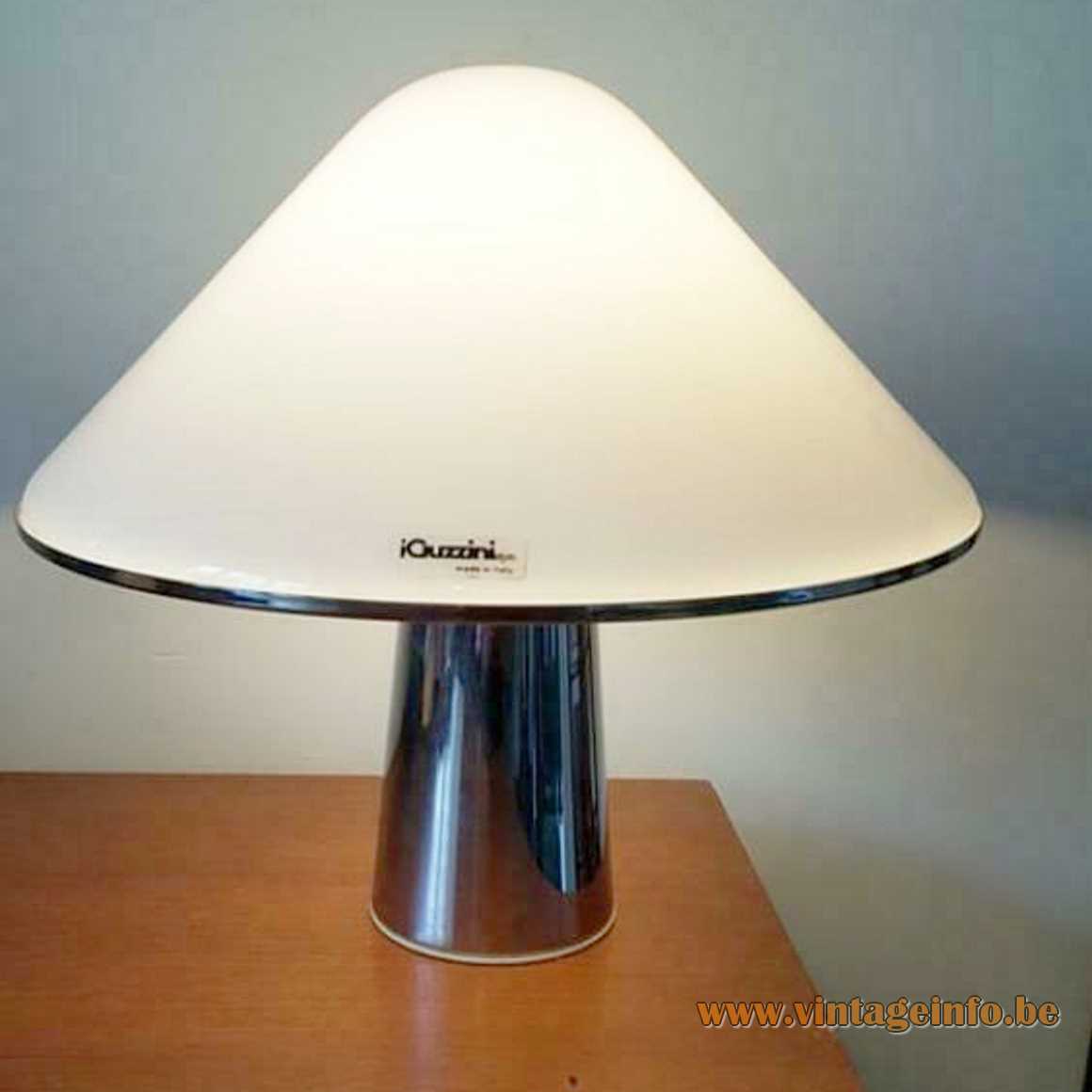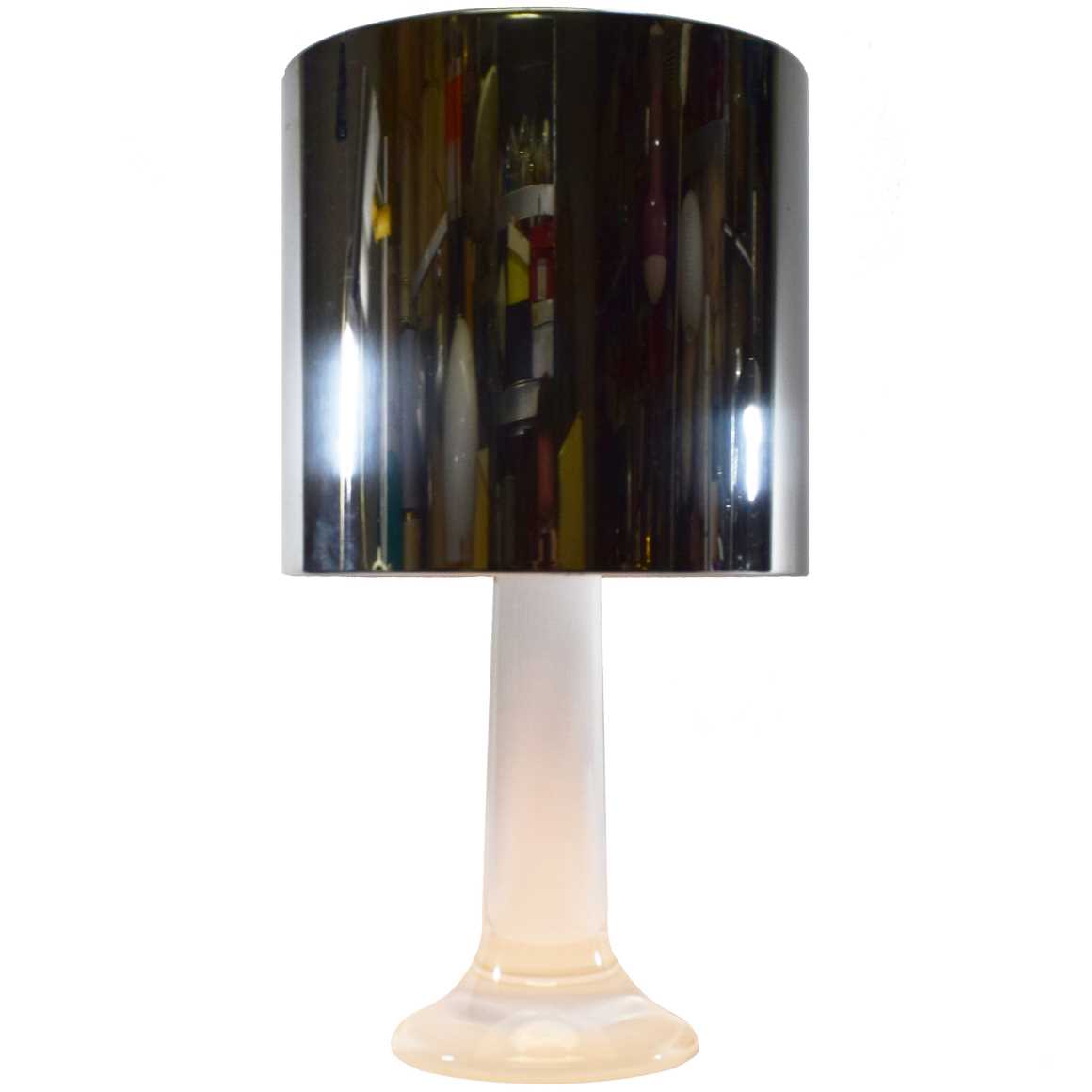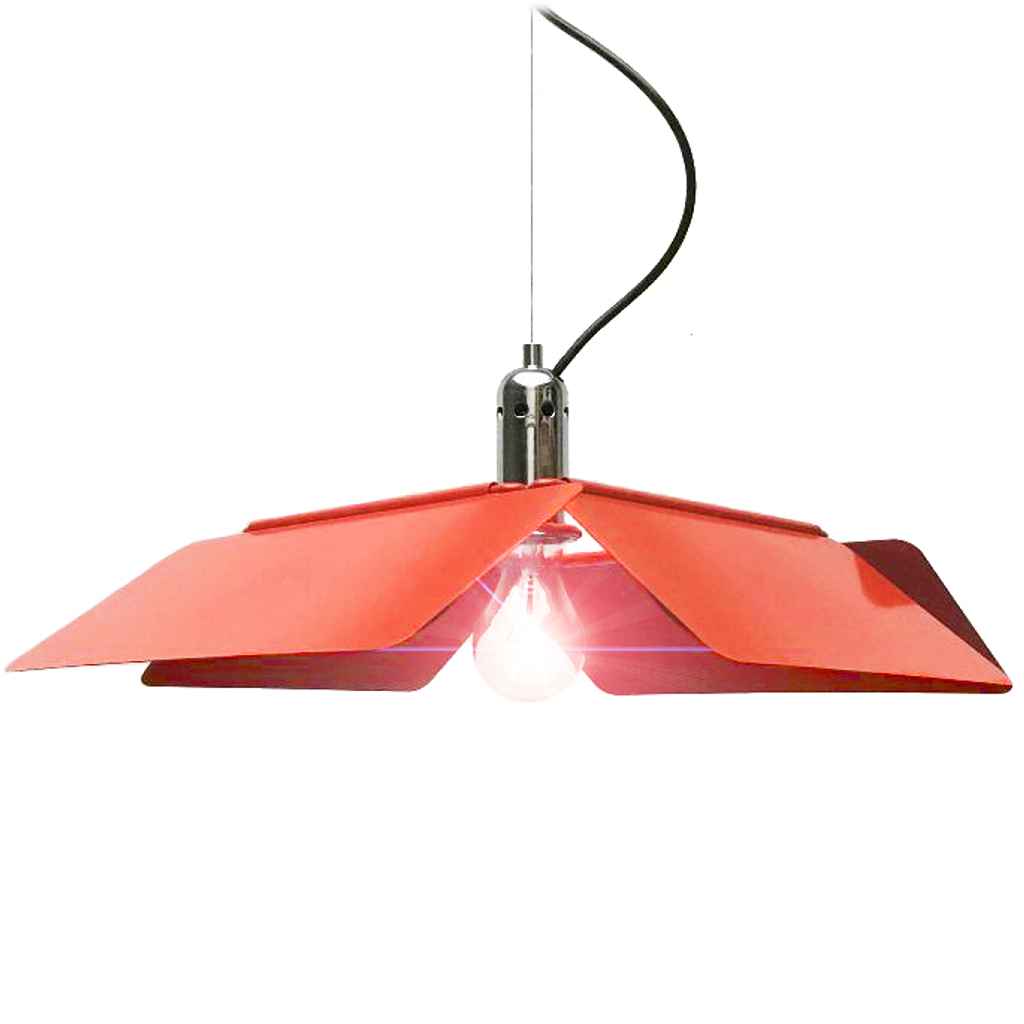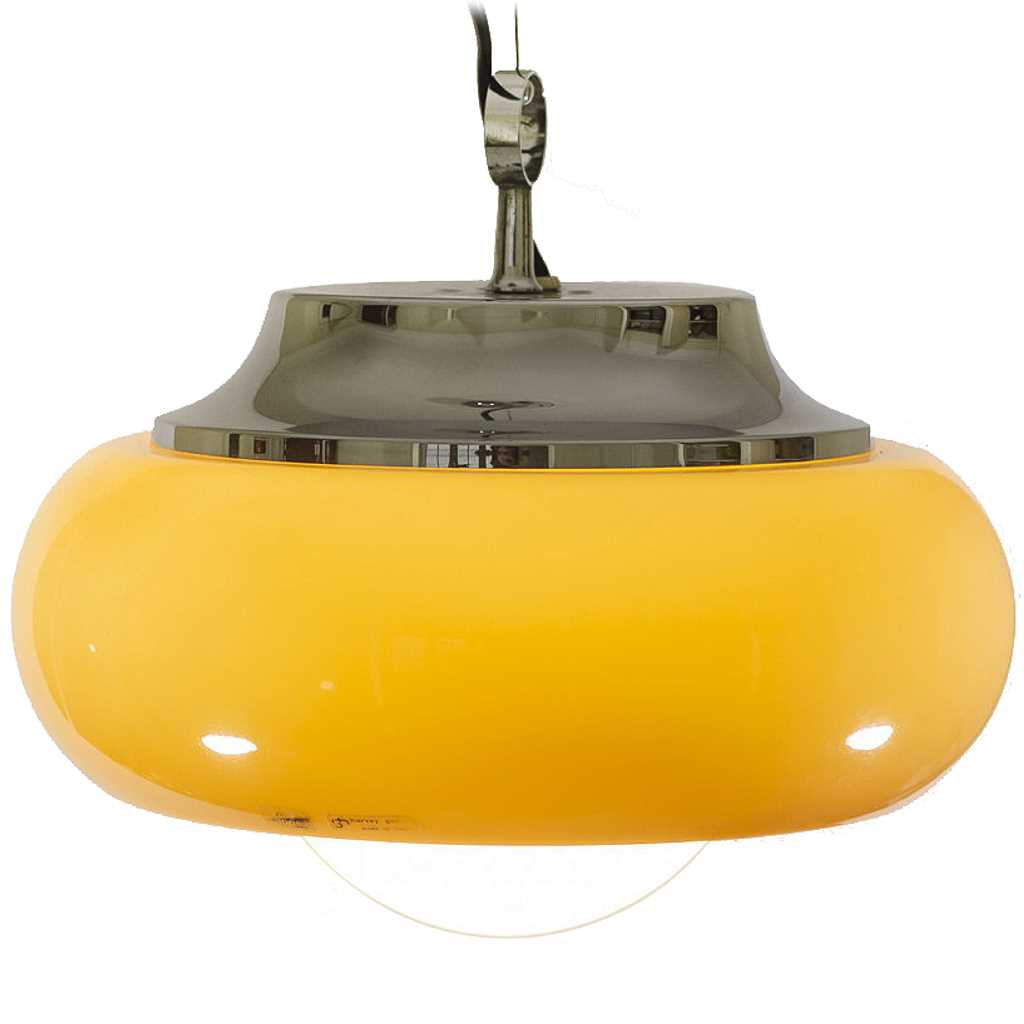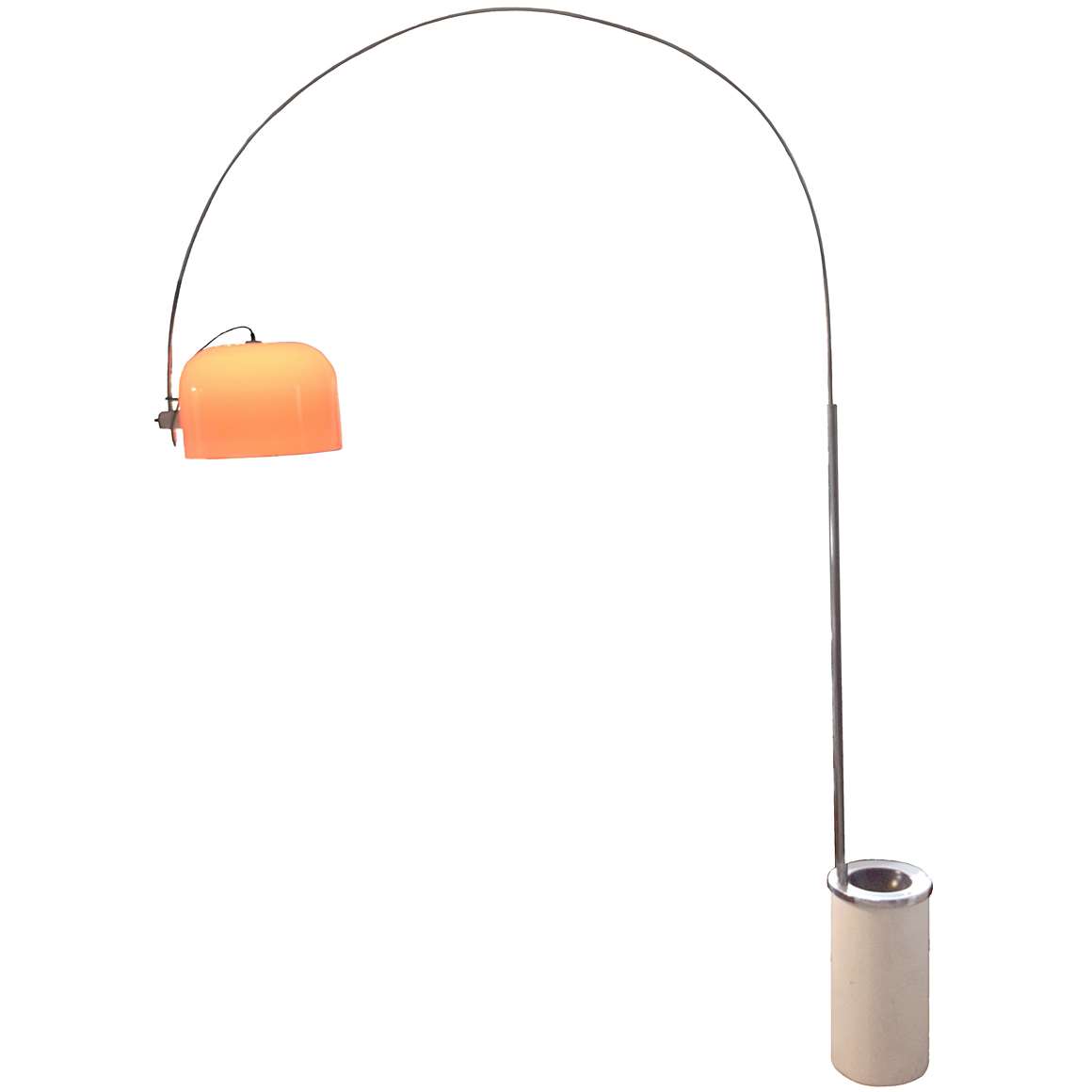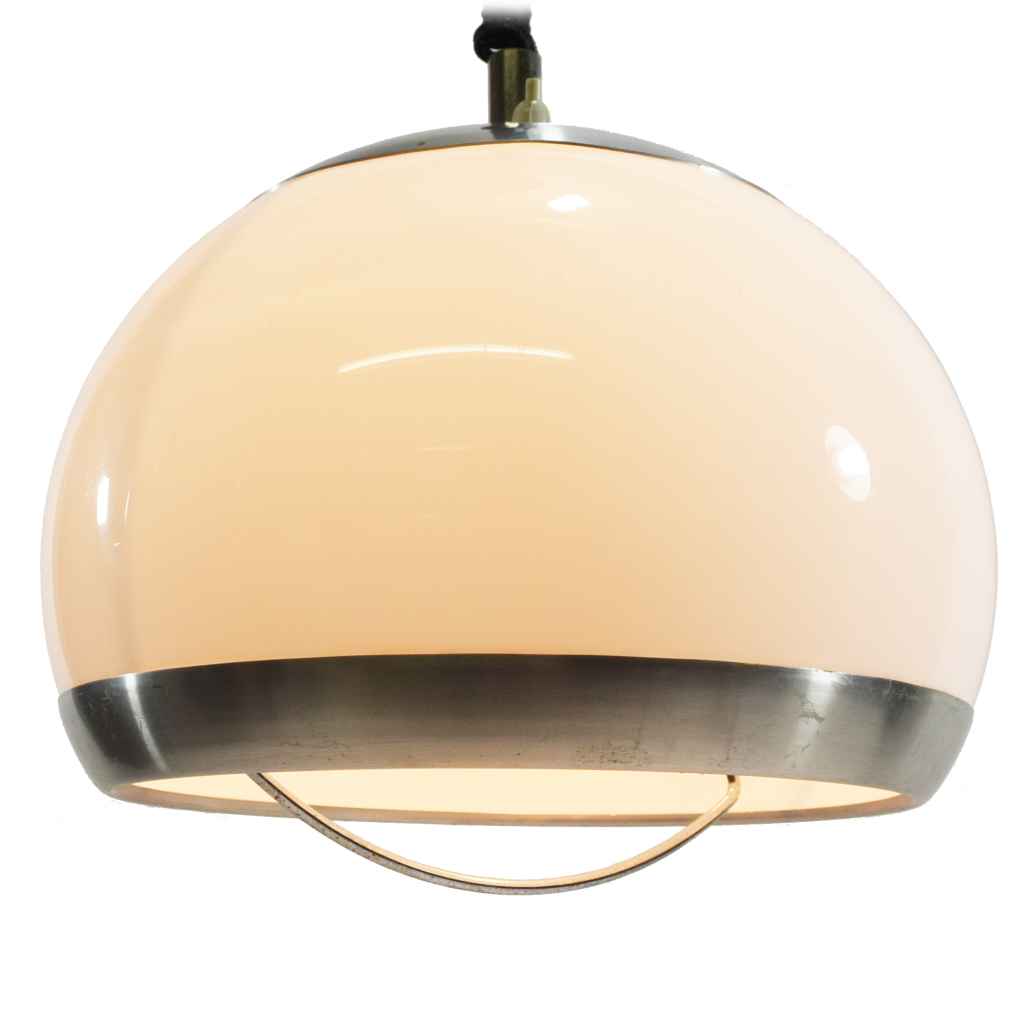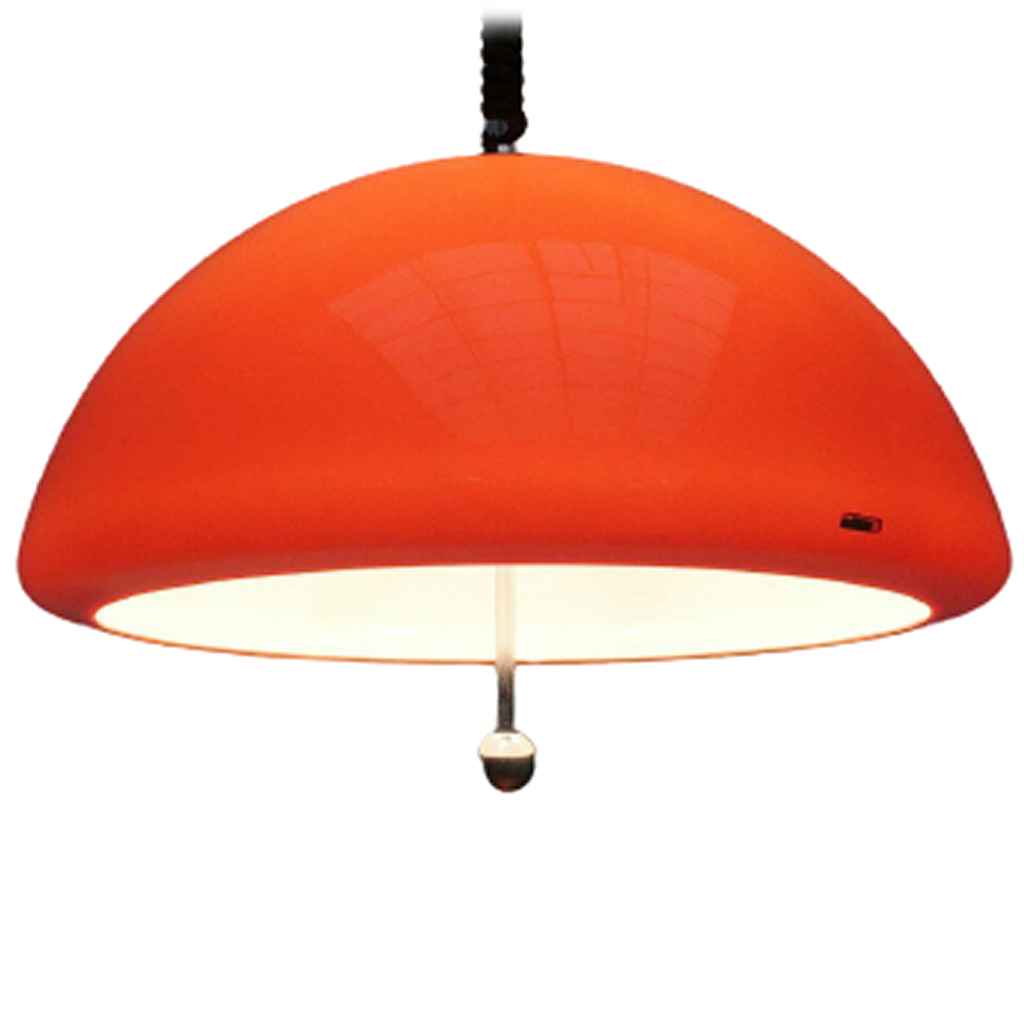Harvey Guzzini Elpis Pendant Lamp
White pendant lamp version and a Elpis table lamp.
Meblo and Sijaj Hrastnik
Outside Italy, Harvey Guzzini lamps were sometimes distributed under local brand names. In former Yugoslavia they were first sold by the Slovenian company Sijaj Hrastnik and later produced and marketed by Meblo.
Meblo grew out of a furniture factory founded in Gorizia in 1948. The company initially produced high-quality wooden and upholstered furniture, and from the 1960s onwards added lighting and a wide range of plastic household products. In cooperation with Harvey Guzzini, Meblo manufactured and sold many Italian designs under its own label – hence the familiar “Meblo – Guzzini” markings on some lamps.
Sijaj Hrastnik, another Slovenian manufacturer, also sold Harvey Guzzini models in Yugoslavia before Meblo took over this role. Today the successor company MebloJOGI specialises in mattresses rather than lighting.
Links (external links open in a new window)
Harvey Guzzini Elpis Pendant Lamp
Materials: Conical degrading brown acrylic mushroom lampshade. Round white acrylic diffuser below. Chrome ring. Bakelite E27 socket.
Cord Length: 80 cm / 31.49”
Height: 32 cm / 12.59”
Width: 48 cm / 18.89”
Electricity: 1 bulb E27, 1 x 100 watt maximum, 110/220 volt.
Any type of light bulb can be used, not a specific one preferred.
Period: 1960s, 1970s – Mid-Century Modern.
Designer: The internal design team of iGuzzini (Ufficio tecnico interno).
Manufacturer: Harvey Guzzini, today named iGuzzini illuminazione S.p.A, via Mariano Guzzini, 37, 62019, Recanati, Italy.
Other versions: The Harvey Guzzini Elpis pendant lamp exists in several colours. Made in white (as you can see below), brown, red, green… Also an upside-down version exists. You can find it over here. And also a floor lamp was made.
Also a table lamp in two sizes exists. This pendant lamp has the same width as the big table lamp.
Elpis: In Greek mythology, Elpis is the female personification and spirit of hope.
In production from 1968 until 1982.
You can find these lamps with labels from Harveiluce, Harvey Guzzini and iGuzzini.
Acrylic
Often named by its commercial name: Perspex, Plexiglas, Crylux, Acrylite, Lucite, is a thermoplastic.
Harvey Guzzini / iGuzzini illuminazione
In the late 1950s the Guzzini family from Recanati (Marche, Italy) set up a small workshop for enamelled copper objects. On 30 June 1959 the brothers Raimondo, Giovanni, Virgilio, Giuseppe and Giannunzio Guzzini, sons of Mariano Guzzini, officially founded Harvey Creazioni for the production of decorative copperware. The name “Harvey” was inspired by the 1950 film Harvey with James Stewart and his imaginary rabbit friend.
Very soon the company moved from the ground floor of the family home in Recanati to a new factory in nearby Le Grazie, where the first lamps were developed. Early lighting models were designed by external designers such as Karl Roters and Charles F. Joosten (Josteen), who had already worked for Fratelli Guzzini on plastic tableware.
In the early 1960s Harvey became a true family business when more brothers joined, and in 1962 industrial designer Luigi Massoni was brought in to lead the design team. Massoni worked for both Fratelli Guzzini and Harvey Guzzini until the mid-1970s and played a key role in the transition from enamelled copper to moulded plastics such as polymethyl methacrylate (PMMA). Under his direction the company developed many of the iconic “space age” domestic lamps that defined the brand.
During the 1960s and 1970s Harvey Guzzini became one of the standard-bearers of Italian mid-century lighting design. The in-house design office, often referred to as Studio 6G or Ufficio Progetti, and external designers created a long series of acrylic pendant, table and floor lamps that combined coloured domes, chrome details and multi-light switching. These domestic lamps were distributed widely in Europe and beyond, for example through Habitat in the UK.
Design House
In the late 1960s Harvey Guzzini also introduced the Design House (DH) label for a more explicitly “design-led” range. Under this name, the company presented its products at international exhibitions and in dedicated Design House catalogues. Lamps shown in one of these catalogues include Alicante, Noppo, Ibis, Azalea, Cigno, Moon, Selene, Poliedra, Focus, Tam Tam, Squared, Taw, Cespuglio, Nastro, Moana, Nitia, Lampione, Lucciola, Piuma and Diaframma. In 1969, Harvey Guzzini also opened a Harvey Guzzini – DH store in central Milan, underlining the more design-oriented positioning of this range.
Harveiluce
Around the same period, the Harveiluce name appeared on several models, sometimes alongside or later replaced by Harvey Guzzini or iGuzzini labels. Harveiluce was thus used only for a relatively short time in the late 1960s and early 1970s, mainly as another trade name for the same family of designs that would later be marketed under the iGuzzini brand.
DOMA
In the 1970s iGuzzini also used the Doma name for a line of plastic furniture and accessories. The Doma collection included space age storage trolleys, coat racks, chairs, ashtrays and decorative spheres, often in injection-moulded ABS with metal details, designed by Luigi Massoni, Dino Pelizza, Fabio Lenci and others. These pieces were marketed under the same corporate umbrella as Harvey Guzzini and iGuzzini lighting, and the iGuzzini logo introduced in 1974 covered products sold under sub-brands such as DH, Doma and Atelier.
iGuzzini
In 1974 the company name was changed from Harvey Guzzini to iGuzzini, and in 1981 to iGuzzini illuminazione. From the mid-1970s onwards the firm progressively shifted its focus from domestic “space age” lighting to architectural and technical lighting for public and professional spaces. Today iGuzzini is an international lighting group based in Recanati, known for collaborations with architects and designers such as Gae Aulenti, Gio Ponti, Rodolfo Bonetto, Piero Castiglioni and many others, and since 2019 it has been part of the Swedish Fagerhult Group.
In 2022–2023 iGuzzini launched the iGuzzini Echoes programme: a series of re-editions of classic 1960s–1970s designs, updated with LED technology and recycled / recyclable materials. The first models to return were Polsino (Gio Ponti, re-edition 2022) and Zurigo (Luigi Massoni, re-edition 2022), followed by Nitia (Rodolfo Bonetto, re-edition 2023), Clan (Flash, Bud, Clan) and Sorella (all credited to the historic Harvey / Harveiluce design team, re-edition 2023).
Although the brand identity and product range have evolved towards professional lighting, the vintage Harvey Guzzini domestic lamps from the 1960s and 1970s – as well as the recent Echoes re-editions – remain an important chapter in the history of Italian plastic design.
Designers
Designers who worked for the company include: Luigi Massoni, Luciano Buttura, Sergio Brazzoli, Ermanno Lampa, Giuseppe Cormio, Emilio Fabio Simion, Karl Roters, Charles F. Joosten, Fabio Lenci, Bruno Gecchelin, Gio Ponti, Rodolfo Bonetto, Gae Aulenti, Piero Castiglioni, Antonella Ducci Valera, Carlo Urbinati, Felice Ragazzo, Ennio Lucini, Cesare Casati, Gianfranco Frattini, Ambrogio Pozzi, Francesco Piccaluga, Aldo Piccaluga, Makio Hasuike, Renzo Piano, Dean Skira, Maurici Ginés, Artec Studio, Enzo Eusebi, Jean-Michel Wilmotte, Arup, Norman Foster, Mario Cucinella, Massimo Iosa Ghini, Massimiliano e Doriana Fuksas, Jean-Marie Duthilleul, Roberto Pamio, Paul Andreau, Giuseppe De Goetzen, Franco Bresciani, Studio D.A.
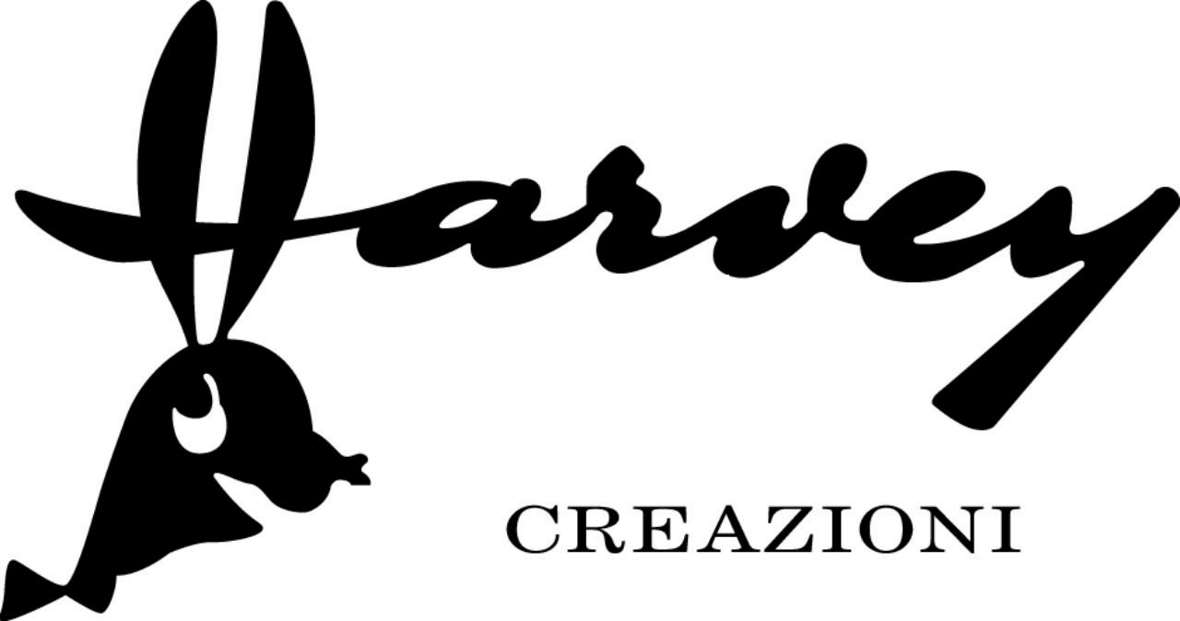
Logo used between 1959 and 1964. Inspired by the 1950 film “Harvey “, starring James Stewart.
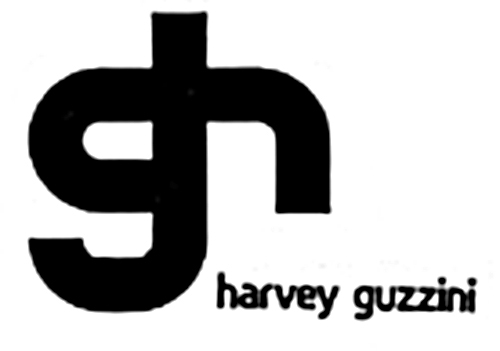
Logo used between 1965 and 1977. This logo was designed by Luigi Massoni.
The architect Massoni was invited to work with Harvey as the company’s art director, a move that gave further impetus to the idea of collaborating with designers.
Between 1967 and 1971, Ennio Lucini designed the catalogue for the DH (Design House) brand, under which lamps for home lighting were marketed.

Logo used from 1974 until today, designed by Advema G&R Associati. This logo embodied the company’s entire output, which was marketed under other brands such as DH, Doma and Atelier.
It was during this period that the company began making technical products. Spot and flood lights in particular.
